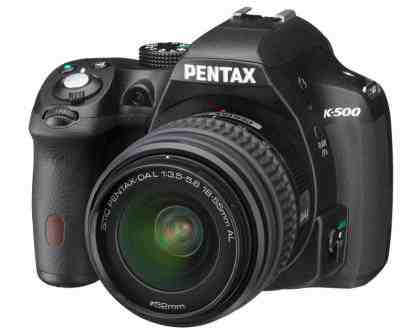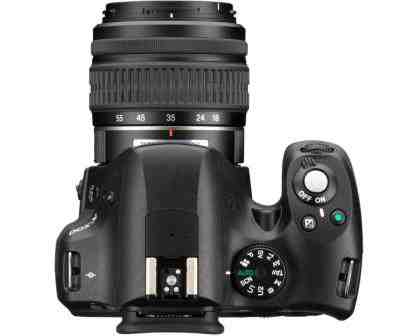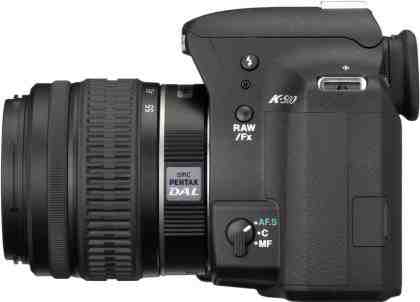Last month we were bowled over by the Pentax K-50 . Its big optical viewfinder, 6fps continuous performance, sublime controls with dual command dials and weather-sealed body are all features we'd expect to pay a lot more than £600 for. It doesn’t have most up-to-date features, with no autofocus while recording videos, no HDMI and a screen that doesn't rotate and isn't touch-sensitive, but it’s a superb camera for people who takes a more traditional approach to photography.

The K-500 is the entry-level model in the range, available for around £350 with a 18-55mm kit lens. That's the second lowest price of any SLR currently on the market, just behind the Canon EOS 1100D launched back in 2011.

That would be remarkable in itself for a newly launched SLR, but what makes the K-500 truly astonishing is that it's barely distinguishable from the K-50. It uses the same viewfinder with a 0.92x magnification, 100% field of view. To get a similarly sized viewfinder in a new Canon on Nikon SLR you'd have to fork out about £900 for the Canon 70D or Nikon D7100 . It has the same elegant controls, including dual command dials for direct access to exposure settings, plus lots of smart touches such as the ability to save a RAW image after capturing a JPEG. Its performance in our tests was identical, capturing a photo every 0.2 seconds in normal use. Continuous shooting was at 5.8fps, slowing to 2.8fps after 37 JPEG frames, or to 2.4fps after eight RAW frames.
With the same sensor and image-processing pipeline and a very similar lens, image quality is indistinguishable from the K-50. You can read our full breakdown of its image quality over in our Pentax K-50 review .

The only difference between the two kit lenses is that this one isn't weather sealed, and nor is the camera body. Holding them side by side, we can’t see any evidence of the K-50 having additional weather-sealing components, but we'd still heed Pentax's advice and keep the K-500 out of the rain. Weather sealing is rare to find in a £600 SLR so we have no qualms about not having it in a £350 one. It also lacks the K-50's array of colour options – though that's hardly disastrous.
The other differences are subtler, and odder. We can forgive the lack of a virtual horizon function, but we'd like to have a simpler internal sensor that can tell which orientation the camera is being held in. Without one, portrait-shaped photos must be rotated manually after copying to a PC.
